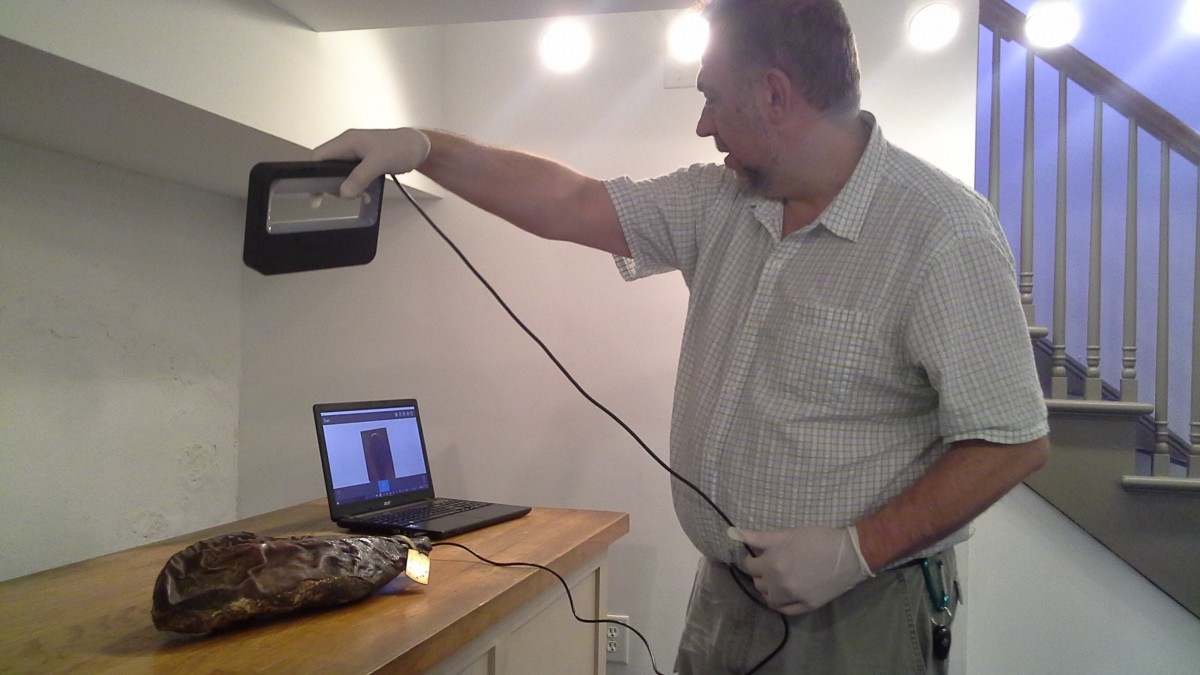Source: Forbes
An archaeologist has scanned the world’s oldest ham, and the world’s oldest peanut.
That archaeologist is Bernard Means, director of the Virtual Curation Unit for Recording Archaeological Materials Systematically (VCU-RAMS, a pretty tortuous acronym, if you ask me). For some context, here’s a video of Dr. Means explaining his project to scan items from a shipwreck in 2012.
Dr. Means is undertaking the project to scan this old food not only because it is really, really old (both the ham and the peanut are approaching 125 years on Earth) but also because they’re culturally significant to the agricultural history of Virginia.
The Isle of Wight County Museum in Smithfield, Virginia explains that this cultural importance is due to a brilliantly weird marketing ploy.
 As the museum explains, “P.D. Gwaltney Jr.’s famous pet ham currently resides at the Isle of Wight County Museum. In 1902, a cured ham was overlooked, and for 20 years, the ham hung from a rafter in one of his packing houses. By 1924, the pet ham was kept in an iron safe which was opened daily for guests to view. Advertised as the world’s oldest Smithfield ham, Gwaltney fashioned a brass collar for the ham and took it to shows and expos to exhibit the preservative powers of his smoking method.”
As the museum explains, “P.D. Gwaltney Jr.’s famous pet ham currently resides at the Isle of Wight County Museum. In 1902, a cured ham was overlooked, and for 20 years, the ham hung from a rafter in one of his packing houses. By 1924, the pet ham was kept in an iron safe which was opened daily for guests to view. Advertised as the world’s oldest Smithfield ham, Gwaltney fashioned a brass collar for the ham and took it to shows and expos to exhibit the preservative powers of his smoking method.”
The pet ham, which can still be viewed 24/7 with the museum’s “Ham Cam” (seriously) looks like it could have been cured this year, according to Means. Looks like Gwaltney wasn’t all bluster.
Why scan something that’s already on display? As Jennifer England, the museum’s director, explains, “Not only will we have more documentation on the ham and peanut, but if those items change over time (by nature), we’ll know. We can also replicate some items as hands-on teaching tools.”
“We would love a 3D printing of the ham to use as a teaching tool or for other programming,” she said. “Since guests can’t touch the ham and other artifacts now, they’d be able to get a little closer [and]examine it. This [would give]guests a better experience at the museum. Since the world’s oldest ham is one of our main attractions, anything we can do to get folks to be more involved and more excited about the museum is always wonderful.”
No word yet on whether anyone has tried eating the pet ham.
Check out Forbes’ article for a more in-depth explanation.






